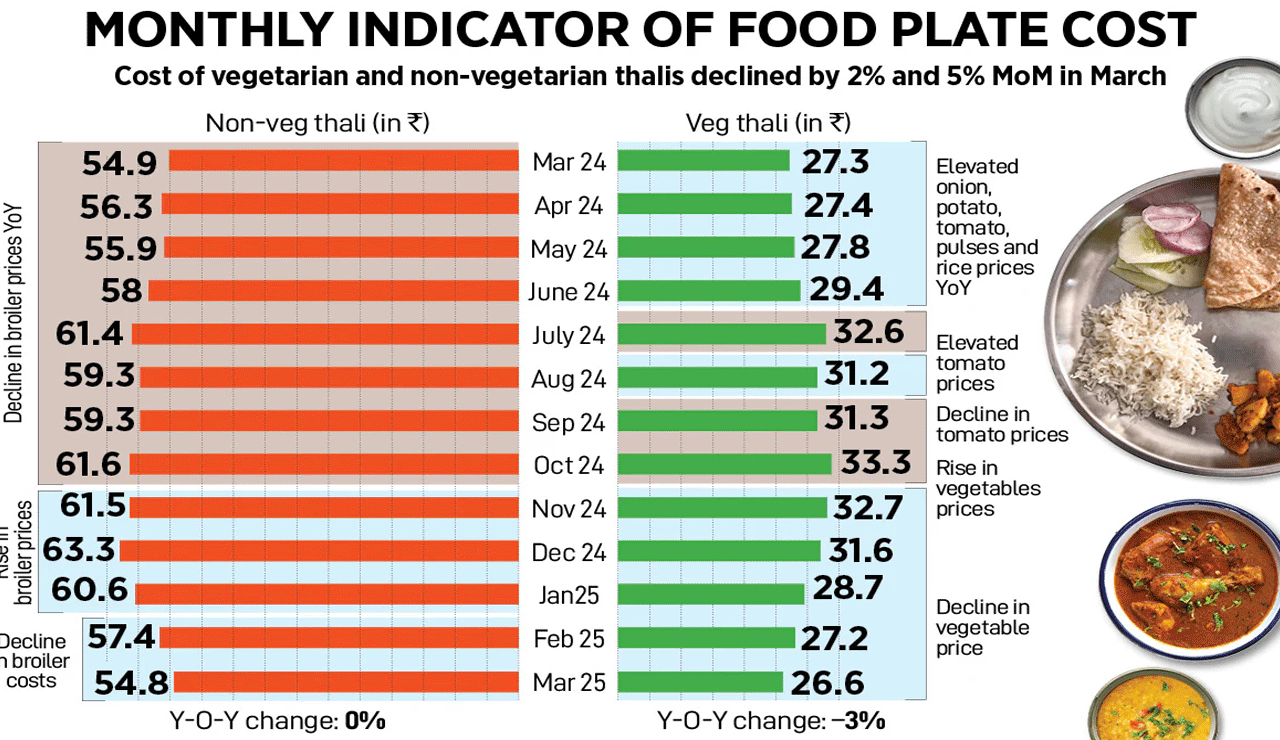Tomato Price Drop Lowers Cost of Thali in March 2025, But Other Food Items Keep It From Falling Further
The average cost of both vegetarian and non-vegetarian thalis in India saw a slight decline in March 2025, thanks to a significant reduction in tomato prices.

The average cost of both vegetarian and non-vegetarian thalis in India saw a slight decline in March 2025, thanks to a significant reduction in tomato prices. However, rising prices of other essential food items like onions, potatoes, and broiler chicken prevented a sharper drop, according to Crisil’s monthly analysis featured in Forbes India’s “How India Eats” series.
Table of Contents
Tomato Prices Plunge 34% YoY in March 2025
Tomato prices dropped 34% year-on-year (YoY) to Rs 21 per kilogram in March 2025, down from Rs 32/kg in the same month last year. The fall is attributed to a 29% increase in tomato arrivals across the country, especially in southern India, where a robust rabi crop boosted output due to higher acreage, better yields, and healthy reservoir levels.
Vegetarian and Non-Vegetarian Thalis See Marginal Cost Reduction
The price drop in tomatoes helped reduce the overall cost of both vegetarian and non-vegetarian thalis in March. However, the impact was limited due to price hikes in other food items, which offset some of the gains.
Rising Prices of Potatoes, Onions, and Vegetable Oi
While tomato prices fell, other ingredients crucial to the Indian thali witnessed YoY increases:
- Potato prices rose by 2% YoY
- Onion prices increased by 6% YoY
- Vegetable oil prices surged by 19% YoY
However, on a month-on-month (MoM) basis, onion, potato, and tomato prices actually declined by 5%, 7%, and 8%, respectively, due to the arrival of fresh harvests.
Broiler Chicken Prices Impact Non-Vegetarian Thali
Broiler chicken, which constitutes about 50% of a non-vegetarian thali’s cost, saw a 2% YoY price rise in March. But on a MoM basis, prices fell 7%, offering slight relief to non-vegetarian consumers.
How the Thali Cost is Calculated
Crisil calculates the average thali cost based on regional input prices from north, south, east, and west India. The thali includes essential components such as:
- Cereals
- Pulses
- Vegetables
- Broiler poultry (for non-veg thali)
- Spices
- Edible oil
- Cooking gas
This analysis helps track the monthly changes in household food expenses and offers a broader insight into food inflation trends affecting the common man.
